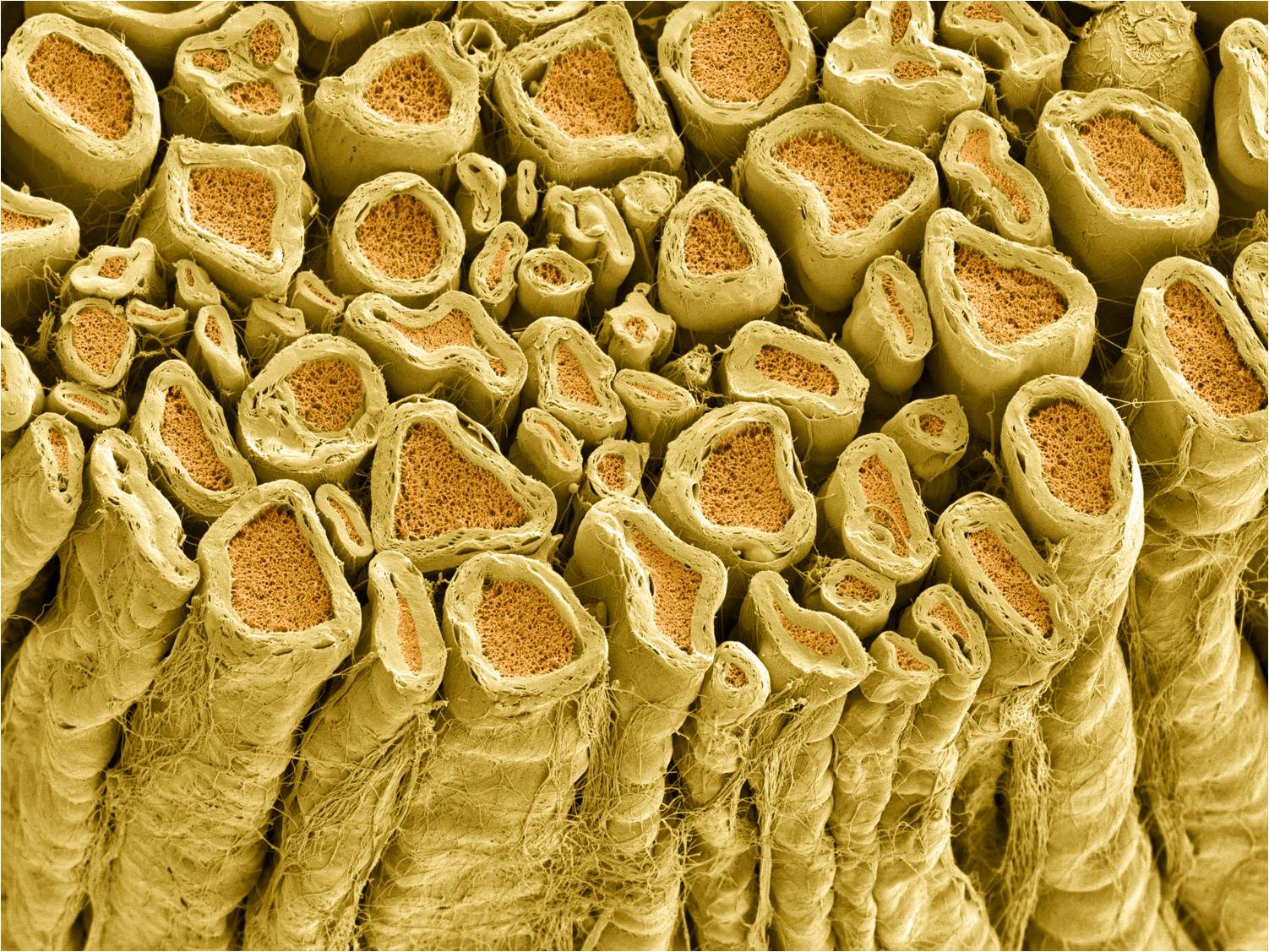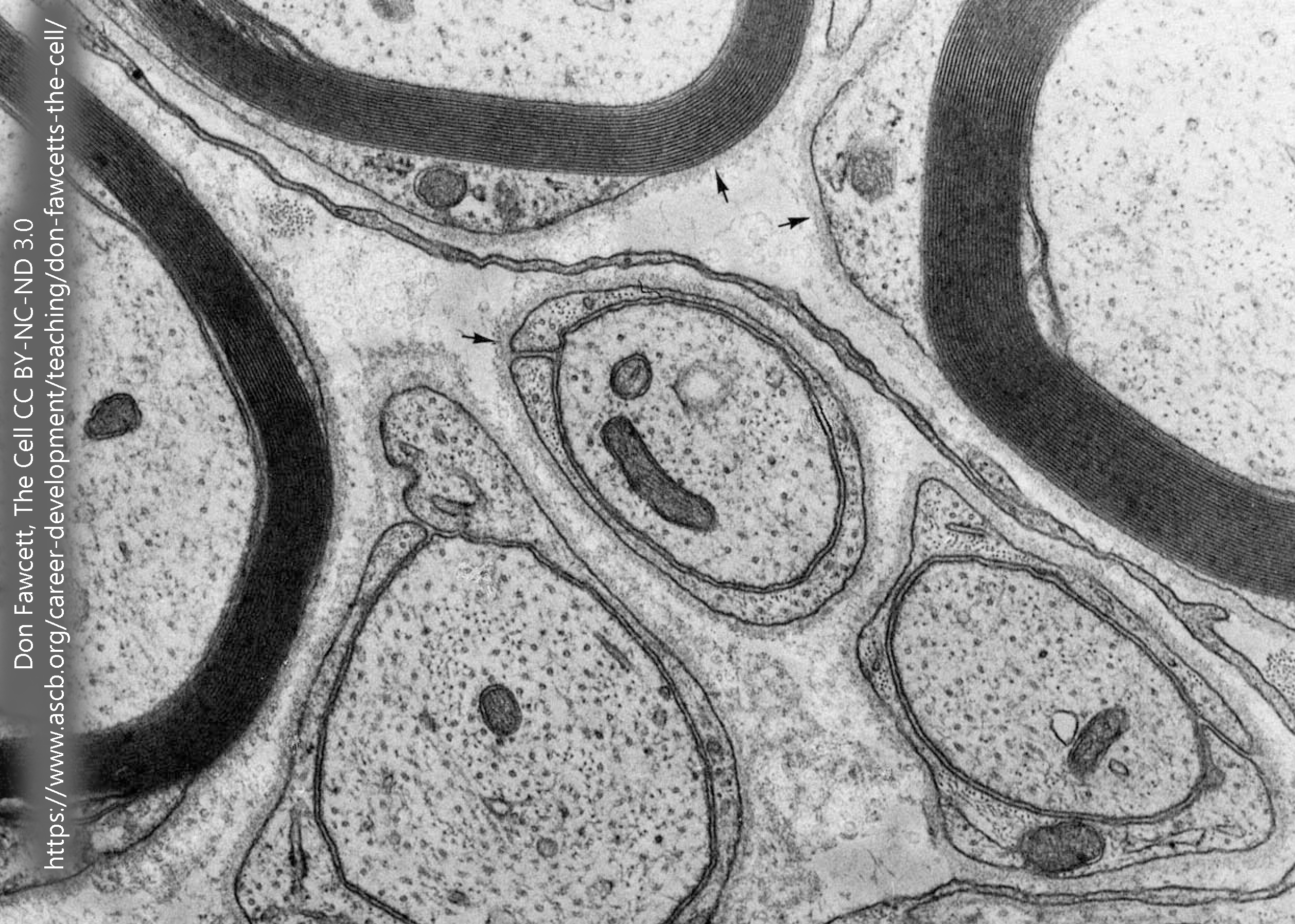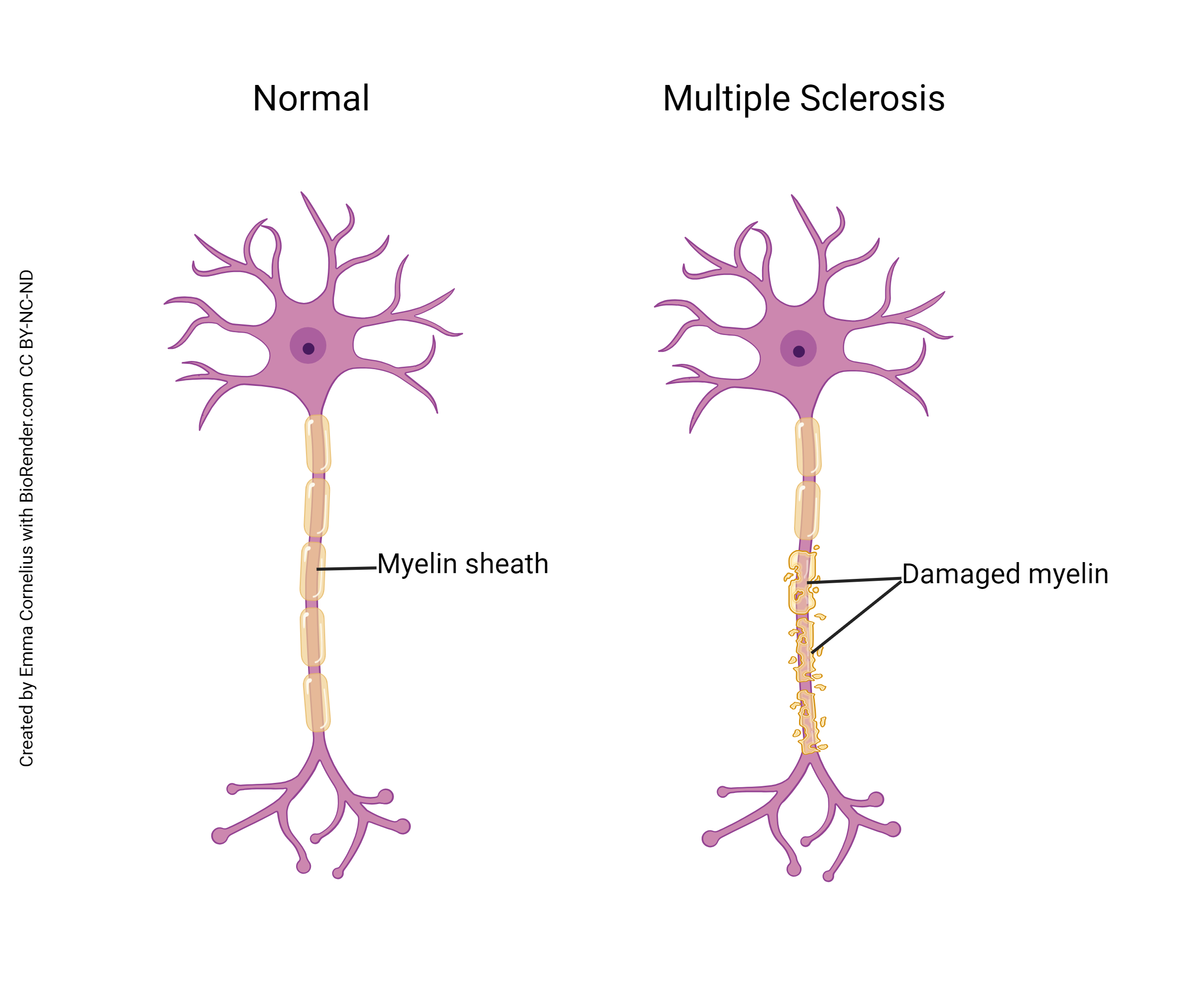The Myelin Sheath
Tess Johnson; Caleb Bevan; Jackson T. Anderson; and Jim Hutchins
Chapter under construction. This is the first draft. If you have questions, or want to help in the writing or editing process, please contact hutchins.jim@gmail.com.
The myelin sheath is part of a neuron that wraps around sections of the axon. The main function of the myelin sheath is to create electric insulation to increase signal speed. There are different ways myelin sheath is formed based on where in the nervous system the cell is. Certain cells can also create specific types of myelin sheath.

Structure of The Myelin Sheath
The myelin sheath is made of alternating layers of protein and lipid molecules. These are important for strength and insulation. The myelin sheath is on certain areas outside of the axon and, therefore, must have structural integrity. Insulation must also be provided, which is why lipid molecules and fatty substances are the major components of the myelin sheath.

Formation of The Myelin Sheath
Central Nervous System
If the myelin sheath covers a neuron in the central nervous system, it will be made from an oligodendrocyte. The plasma membrane of an oligodendrocyte will be stretched out in a belt-like piece and will surround the axon of a nearby neuron. These pieces will then wrap around the axon forty times or more. Oligodendrocyte cells are fairly large compared to neurons and can provide the myelin sheath for up to fifty neurons.
Peripheral Nervous System
If the myelin sheath covers a neuron in the peripheral nervous system, it will be made from a Schwann cell. The Schwann cell will surround the axon of a nearby neuron. On the external surface, the Schwann cell will fuse with the axon. The Schwann cell then spirals around the axon, similar to a scroll of paper tightening. Schwann cells are small compared to neurons and, therefore, can only provide myelin for a single neuron.

Functions of The Myelin Sheath
The myelin sheath provides electric insulation for the axon of a neuron. This is important because it facilitates the electrical conduction of action potentials. When a neuron fires an action potential, sodium-gated ion channels open along the axon to allow sodium inside the cell. This is what propels an action potential forward. When the myelin sheath surrounds the axon, these sodium-gated ion channels are blocked, and the electric signal of the action potential can’t flow through the myelin sheath. This causes the signal to jump to the exposed parts of the axon, called the Nodes of Ranvier. The jumping of the action potential signal to these nodes is called saltatory conduction and significantly increases the speed of the signal.

Multiple Sclerosis
Multiple Sclerosis (MS) is a disease that damages myelin. The body mistakenly attacks the myelin sheath, but exact cause of MS is unknown. This disrupts communication between the brain and body, and there is currently no cure but there are some treatments to manage symptoms. Some common treatments for MS are immunosuppressant drugs or steroids.

Media Attributions
- Myelinated axons © Tom Deerinck and Mark Ellisman is licensed under a CC BY-NC (Attribution NonCommercial) license
- Cell Surface © Don W. Fawcett is licensed under a CC BY-NC-ND (Attribution NonCommercial NoDerivatives) license
- Myelin Sheath Formation © Alexa Crookston is licensed under a CC BY-SA (Attribution ShareAlike) license
- Myelination © Betts, J. Gordon; Young, Kelly A.; Wise, James A.; Johnson, Eddie; Poe, Brandon; Kruse, Dean H. Korol, Oksana; Johnson, Jody E.; Womble, Mark & DeSaix, Peter adapted by Jim Hutchins is licensed under a CC BY (Attribution) license
- Multiple Sclerosis © Emma Cornelius is licensed under a CC BY-NC-ND (Attribution NonCommercial NoDerivatives) license

